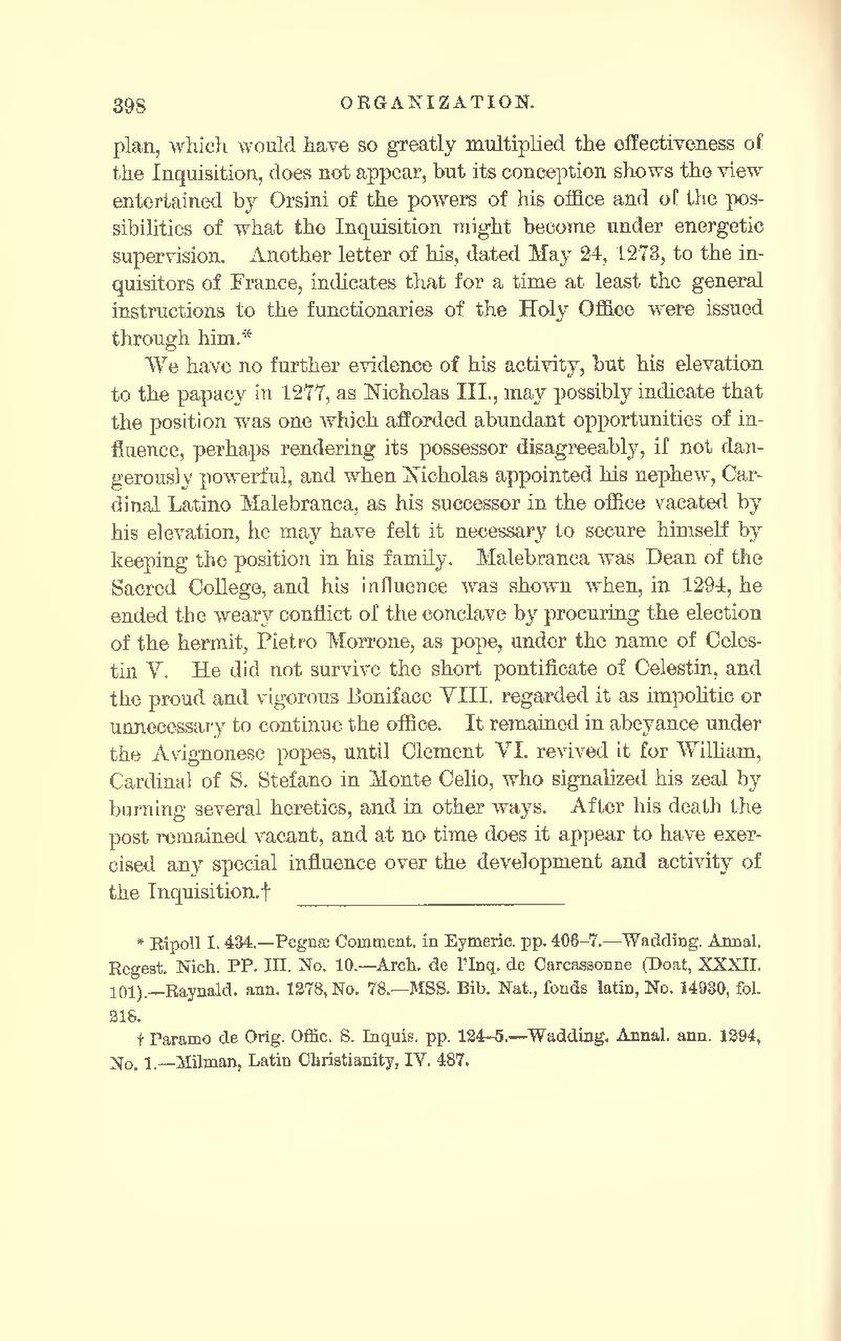plan, which would have so greatly multiplied the effectiveness of the Inquisition, does not appear, but its conception shows the view entertained by Orsini of the powers of his office and of the possibilities of what the Inquisition might become under energetic supervision. Another letter of his, dated May 24, 1273, to the inquisitors of France, indicates that for a time at least the general instructions to the functionaries of the Holy Office were issued through him.[1]
We have no further evidence of his activity, but his elevation to the papacy in 1277, as Nicholas III., may possibly indicate that the position was one which afforded abundant opportunities of influence, perhaps rendering its possessor disagreeably, if not dangerously powerful, and when Nicholas appointed his nephew. Cardinal Latino Malebranca, as his successor in the office vacated by his elevation, he may have felt it necessary to secure himself by keeping the position in his family. Malebranca was Dean of the Sacred College, and his influence was shown when, in 1294, he ended the weary conflict of the conclave by procuring the election of the hermit, Pietro Morrone, as pope, under the name of Celestin V. He did not survive the short pontificate of Celestin, and the proud and vigorous Boniface VIII. regarded it as impolitic or unnecessary to continue the office. It remained in abeyance under the Avignonese popes, until Clement VI. revived it for William, Cardinal of S. Stefano in Monte Celio, who signalized his zeal by burning several heretics, and in other ways. After his death the post remained vacant, and at no time does it appear to have exercised any special influence over the development and activity of the Inquisition.[2]
- ↑ Ripoll I. 434. — Pegnas Comment, in Eymeric. pp. 406-7. — Wadding. Annal. Regest. Nich. PP. III. No. 10.— Arch, de I'lnq. de Carcassonne (Doat, XXXII. 101) —Raynald. ann. 1278, No. 78.— MSS. Bib. Nat., fonds latin, No. 14930, fol. 218.
- ↑ Paramo de Orig. Offic. S. Inquis. pp. 124-5. — Wadding. Annal. ann. 1294, No. 1. — Milman, Latin Christianity, IV. 487.
